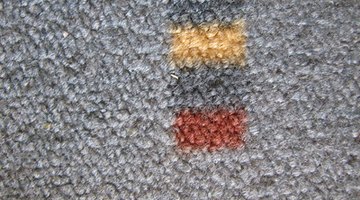The Effects of Chlorine Bleach on Berber Carpet
The effect of chlorine bleach on Berber carpet depends on what type of material is used to make the Berber carpet. Materials used to create Berber include wool, nylon, Olefin (polypropylene), PET (petro-plastic) and other blends. Berber carpet made from wool or nylon have the least problems. Some sellers are promoting Berber carpet saying that bleach will clean stains. Bleach can cause extreme problems when used on Berber carpet.
Skin Irritation and Rashes

Berber carpets made from any material besides nylon and wool are impervious to color loss when using bleach. The stain is removed, but the bleach sits in the carpet; you can't rinse it out with water. Use ann "anti-clor" chemical to properly neutralize the bleach. The carpet will dry where the chlorine bleach was used, but it leaves behind a residue. The residue can cause skin irritations and rashes on both animals and humans.
High pH Balance
The Berber weave traps the bleach in the carpet backing and in the bottom of the weave to create a high pH balance in that area. The high pH balance creates a type of magnet that attracts dirt and soil. Stains reappear easier in the area that was cleaned with the bleach.
Reactivation
Dried bleach is somewhat dormant, but even a small amount of humidity will reactivate the bleaching chemicals. Bleach is a health hazard; using it on Berber carpet provides an area where bleach can continually cause irritation to the people or animals that touch the spot.
Resources
Writer Bio
Kim Blakesley is a home remodeling business owner, former art/business teacher and school principal. She began her writing and photography career in 2008. Blakesley's education, fine arts, remodeling, green living, and arts and crafts articles have appeared on numerous websites, including DeWalt Tools, as well as in "Farm Journal" and "Pro Farmer."
Photo Credits
- Background carpet image by fotolia © 2happy from Fotolia.com
More Articles



